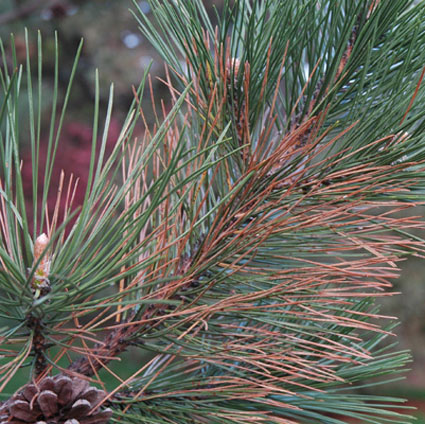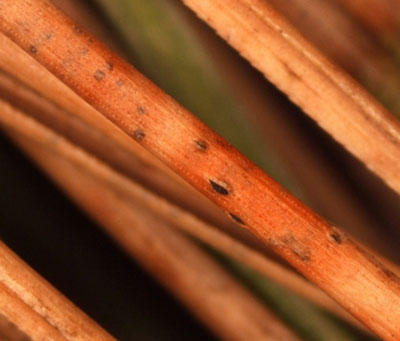Issue 3, May 8, 2009
Dothistroma Needle Blight
This fungal disease occurs mainly on Austrian pine in Illinois. Infection of old and new needles may occur from May into October. If you have identified this as a problem on your pine, fungicide applications should be considered. They are applied just before buds begin to elongate/swell and repeated in wet seasons according to label directions. Affected needles from past years can serve as a source of inoculum on new needles. Spores are spread from infected needles by wind and water. Unfortunately, the products registered specifically for control of this pathogen are all protective/contact chemicals. They will wash off with rain and may need to be repeated more frequently to continue to protect foliage. None have systemic activity. They include Camelot, Junction, Kocide, and Phyton 27. Copper, copper sulfate, and mancozeb available in home gardener package sizes can be used by home growers trying to control the disease in the home landscape. There are a few products with a more general, ornamental label. Read the label carefully to be certain the product is registered for the host (pine) and the disease (Dothistroma needle blight).

Of course, before you start spraying, be certain of your diagnosis. Dothistroma blight causes the lower needles in the tree to have bands of brown or yellow tissue. Often the tissue beyond those bands dries out, resulting in death of the needle tips as seen in the image. The overall appearance is browning of the lower third to half of the tree. Early defoliation may occur in spring and summer. Do not confuse these symptoms with salt burn or scorch which cause needle tips to turn brown on the exposed side of the tree. If Dothistroma is present, fruiting bodies of the fungus (see image) will be found embedded in the needles. A diagnostic lab can examine spores within those fruiting bodies to confirm this fungus.

Cultural controls to promote more rapid drying of foliage may help. Suggestions are to prune overgrown plants in the area, control weeds, and use proper spacing of plants. In the home landscape some control of Dothistroma blight may be attained by removing fallen needles and helping tree vitality through fertilization and watering practices.
For more information, consult report on plant disease no. 624, Needle Blights and Needle Casts of Pines. This report is available on the web at or in your local extension office.--Nancy Pataky
Author:
Nancy Pataky